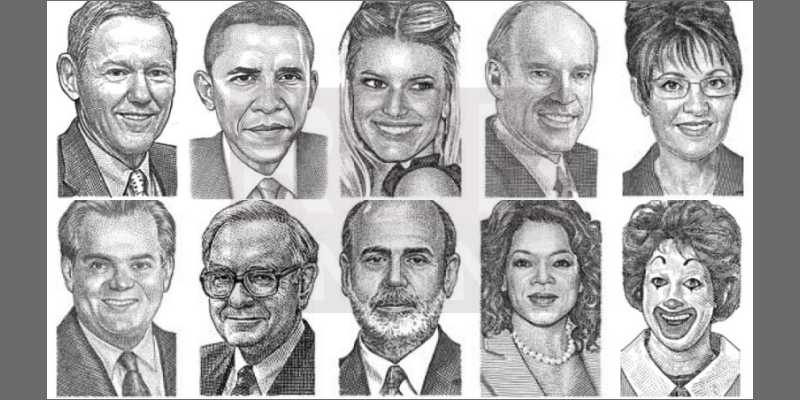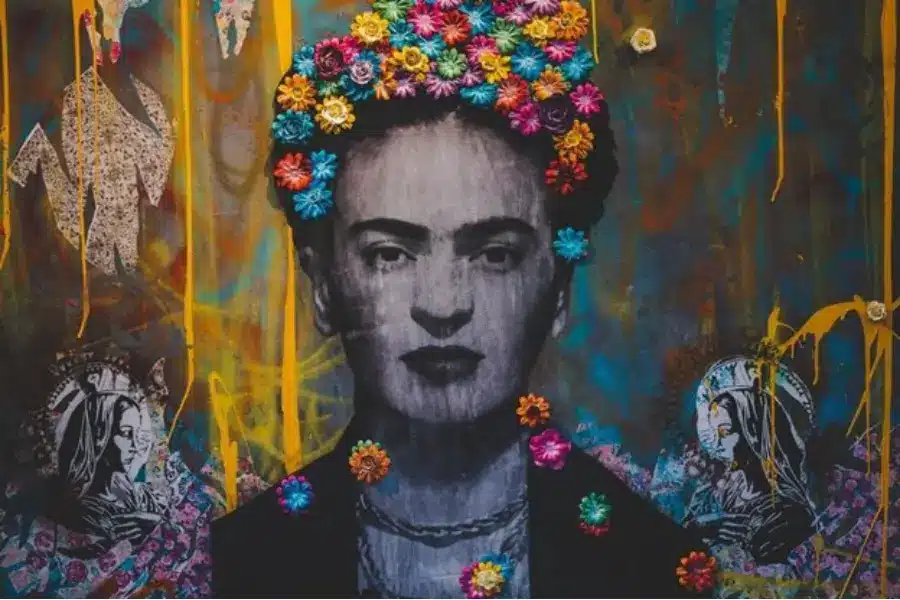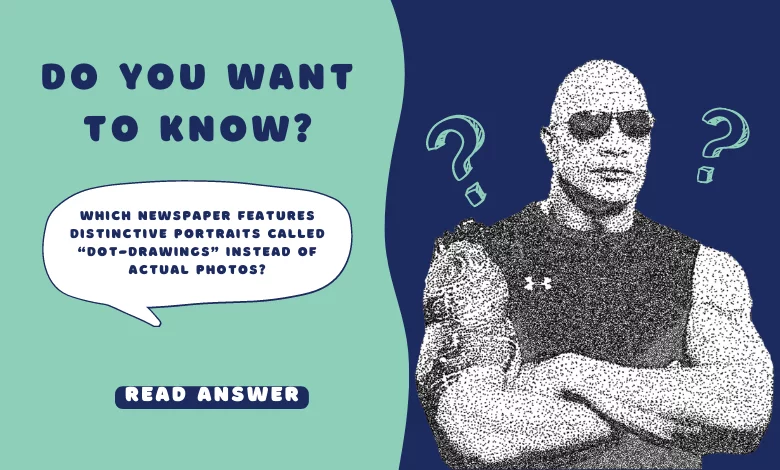Introduction
TAG: which newspaper features distinctive portraits called “dot-drawings” instead of actual photos
In the ever-evolving landscape of journalism and print media, certain newspapers have chosen a unique path to convey news stories and capture the essence of their subjects. Rather than relying on traditional photographs, these newspapers feature distinctive portraits created through dot-drawings, a method that blends artistic expression with journalistic storytelling. In this detailed article, we will explore the newspapers that have embraced dot-drawings, the history and technique behind this distinctive art form, and the impact it has on the visual narrative within the realm of news reporting.

The Pioneers of Dot-Drawings in Newspapers
1. The Wall Street Journal
The Wall Street Journal, renowned for its coverage of business and finance, has been a trailblazer in the use of dot-drawings. The publication utilizes stippling techniques to create intricate portraits that accompany articles, providing a distinctive visual signature. We’ll delve into the reasons behind The Wall Street Journal’s adoption of dot-drawings and how this choice aligns with its editorial identity.
Must Read=¿Bajaron realmente los precios de los alimentos? | El Tiempo
2. The Economist
Another notable publication incorporating dot-drawings is The Economist, a global magazine recognized for its in-depth analysis and commentary on international affairs. The use of detailed dot-drawings in The Economist contributes to its sophisticated and intellectual aesthetic, reflecting a deliberate choice in visual storytelling. We will explore how dot-drawings enhance the magazine’s editorial voice and engage its readership.
The Art and Technique of Dot-Drawings
1. Stippling: The Building Block of Dot-Drawings

Stippling, a technique involving the creation of images through the application of numerous small dots, is the foundation of dot-drawings. We will examine the artistic principles of stippling, its historical roots, and its evolution as a medium for conveying intricate details and conveying emotions.
2. The Role of Technology in Dot-Drawings
While dot-drawings have historic roots in manual artistic techniques, the integration of technology has transformed the process. From early hand-drawn dot-drawings to the contemporary use of digital tools, we will explore how advancements in technology have influenced the creation and reproduction of dot-drawings in newspapers.
The Impact on Visual Storytelling
1. Distinctive Aesthetic Appeal
Dot-drawings contribute to a distinctive aesthetic that sets newspapers apart in the visually saturated world of media. We will analyze how the unique texture and style of dot-drawings create a memorable and recognizable visual identity for newspapers, fostering a connection with readers.
2. Conveying Emotion and Depth
The meticulous nature of stippling allows artists to convey a wide range of emotions and depth in dot-drawings. We will explore how this aspect of dot-drawings enhances the visual storytelling experience, enabling newspapers to communicate nuanced narratives that resonate with readers on a deeper level.
3. Navigating Ethical Considerations
The use of dot-drawings raises ethical considerations regarding accuracy and representation. We will examine how newspapers navigate the balance between artistic interpretation and the responsibility to accurately depict individuals and events. Interviews with artists, editors, and media ethicists will provide insights into the decision-making processes.

The Reader’s Perspective
1. Engagement and Interpretation
How do readers perceive and engage with dot-drawings in comparison to traditional photographs? Through reader surveys and interviews, we will explore how the distinctive visual style of dot-drawings influences the audience’s interpretation of news stories and their overall reading experience.
2. Establishing a Connection
The visual elements of a newspaper play a crucial role in establishing a connection with readers. We will investigate how the use of dot-drawings contributes to reader engagement and loyalty, examining whether the unique visual style influences the way readers connect with the editorial content.
Criticisms and Challenges
1. Balancing Artistic Expression and Information Accuracy
While dot-drawings offer a unique artistic expression, there may be concerns regarding their ability to accurately convey information. We will explore criticisms surrounding the potential for misrepresentation and how newspapers address these challenges.
2. Adaptation to Evolving Media Trends
In an era dominated by digital media and rapidly evolving visual storytelling trends, we will investigate how newspapers utilizing dot-drawings adapt to stay relevant and resonate with new generations of readers. Interviews with editorial teams will shed light on the considerations and strategies involved in navigating this landscape.

FAQ
1. What is a dot-drawing, and how does it differ from traditional photographs in newspapers?
A dot-drawing is a visual representation created using stippling techniques, involving the application of numerous small dots to form an image. In newspapers, this artistic approach stands apart from traditional photographs, offering a unique aesthetic that relies on dots to convey detailed and emotive portraits.
2. Which newspapers are known for featuring dot-drawings instead of actual photos?
Prominent newspapers that have embraced dot-drawings include The Wall Street Journal and The Economist. These publications utilize stippling techniques to create distinctive portraits, contributing to their visual identity and editorial style.
3. Why do some newspapers choose dot-drawings over traditional photographs?
Newspapers may opt for dot-drawings to establish a unique visual identity, convey a sophisticated aesthetic, or enhance storytelling through emotive and detailed representations. The choice often aligns with the publication’s editorial voice and the desire to stand out in a visually competitive media landscape.
4. What is stippling, and how is it related to dot-drawings?
Stippling is an artistic technique involving the creation of images through the application of small dots. In the context of dot-drawings, stippling serves as the fundamental method for creating intricate and detailed portraits, contributing to the unique texture and style associated with this form of visual representation.
5. How has technology influenced the creation of dot-drawings in newspapers?
While dot-drawings historically involved manual stippling techniques, the integration of technology has transformed the process. Digital tools are now commonly used to create dot-drawings, providing artists with new methods for achieving precision and enhancing the overall visual appeal.
6. What impact do dot-drawings have on visual storytelling in newspapers?
Dot-drawings contribute to a distinctive aesthetic that sets newspapers apart visually. They enable newspapers to convey a wide range of emotions and depth, enhancing the overall storytelling experience for readers through unique and memorable visual elements.
7. How do readers perceive dot-drawings in comparison to traditional photographs?
Reader perceptions of dot-drawings may vary, and their engagement with this distinctive visual style can influence their interpretation of news stories. The unique texture and emotive qualities of dot-drawings contribute to a deeper connection between readers and the editorial content.
8. Are there ethical considerations associated with the use of dot-drawings in newspapers?
The use of dot-drawings raises ethical considerations regarding accuracy and representation. Newspapers employing this artistic approach must navigate the balance between artistic interpretation and the responsibility to accurately depict individuals and events.
9. How do newspapers using dot-drawings adapt to evolving media trends?
In an era dominated by digital media, newspapers featuring dot-drawings must adapt to stay relevant. Interviews with editorial teams can provide insights into the considerations and strategies involved in navigating this evolving media landscape while maintaining the distinctive visual identity associated with dot-drawings.
10. Can dot-drawings accurately convey information, or do they prioritize artistic expression?
Dot-drawings offer a unique blend of artistic expression and information conveyance. While they prioritize artistic expression, concerns may arise regarding the accuracy of information. Newspapers utilizing dot-drawings must address these challenges to ensure a balance between visual appeal and factual representation.
Conclusion
In conclusion, the integration of dot-drawings in newspapers is a captivating intersection of art and journalism. As we explore the history, technique, and impact of dot-drawings, we gain insights into the deliberate choices made by publications like The Wall Street Journal and The Economist. The distinctive aesthetic appeal, the emotional depth conveyed, and the ethical considerations surrounding dot-drawings contribute to a rich tapestry of visual storytelling within the realm of news reporting. Through the lens of stippling, newspapers are not merely conveying information but creating an immersive visual experience that resonates with readers on a profound level.
